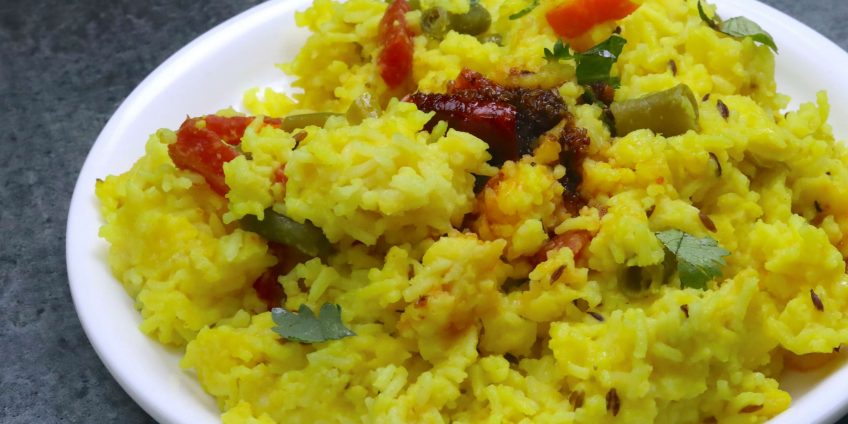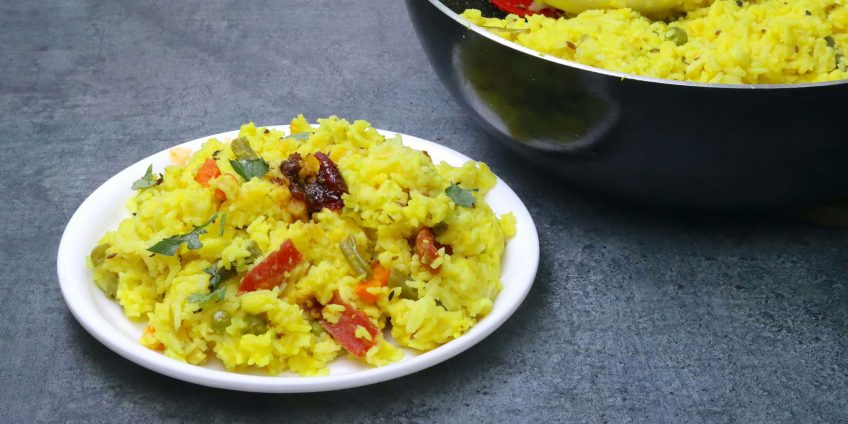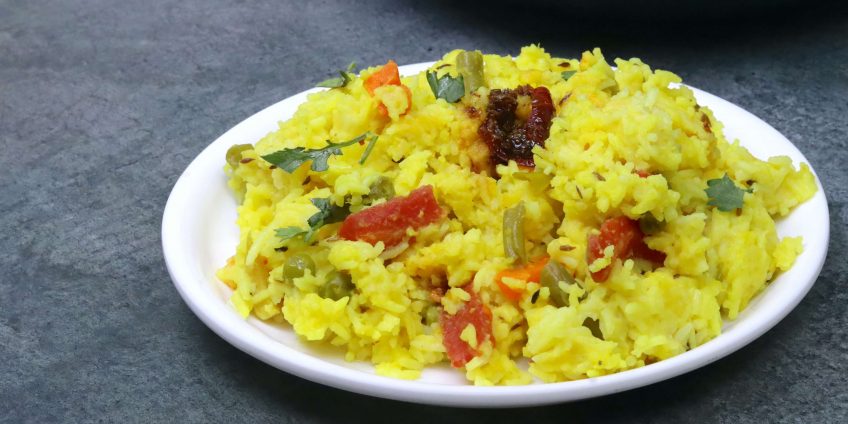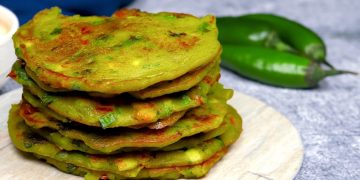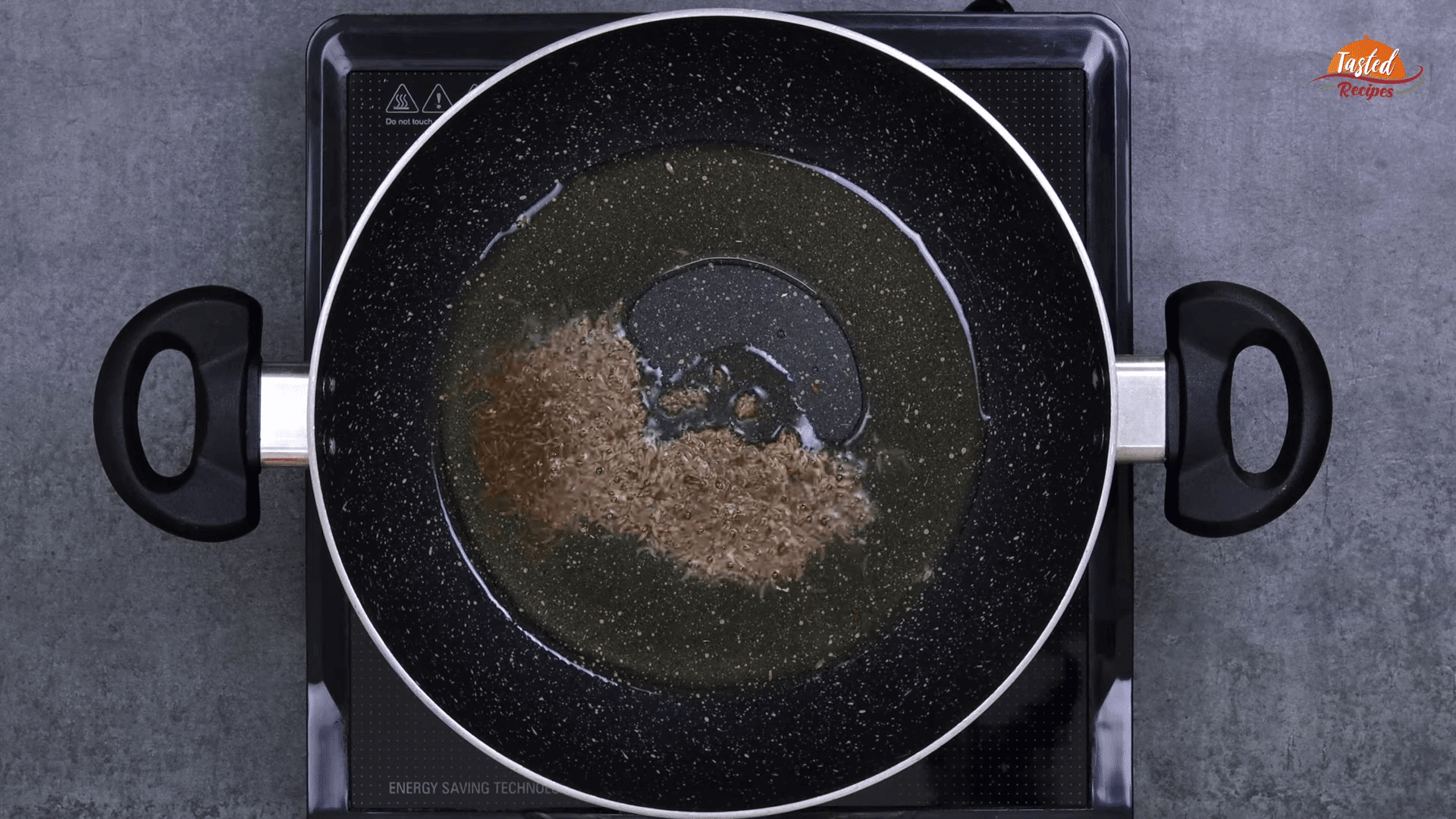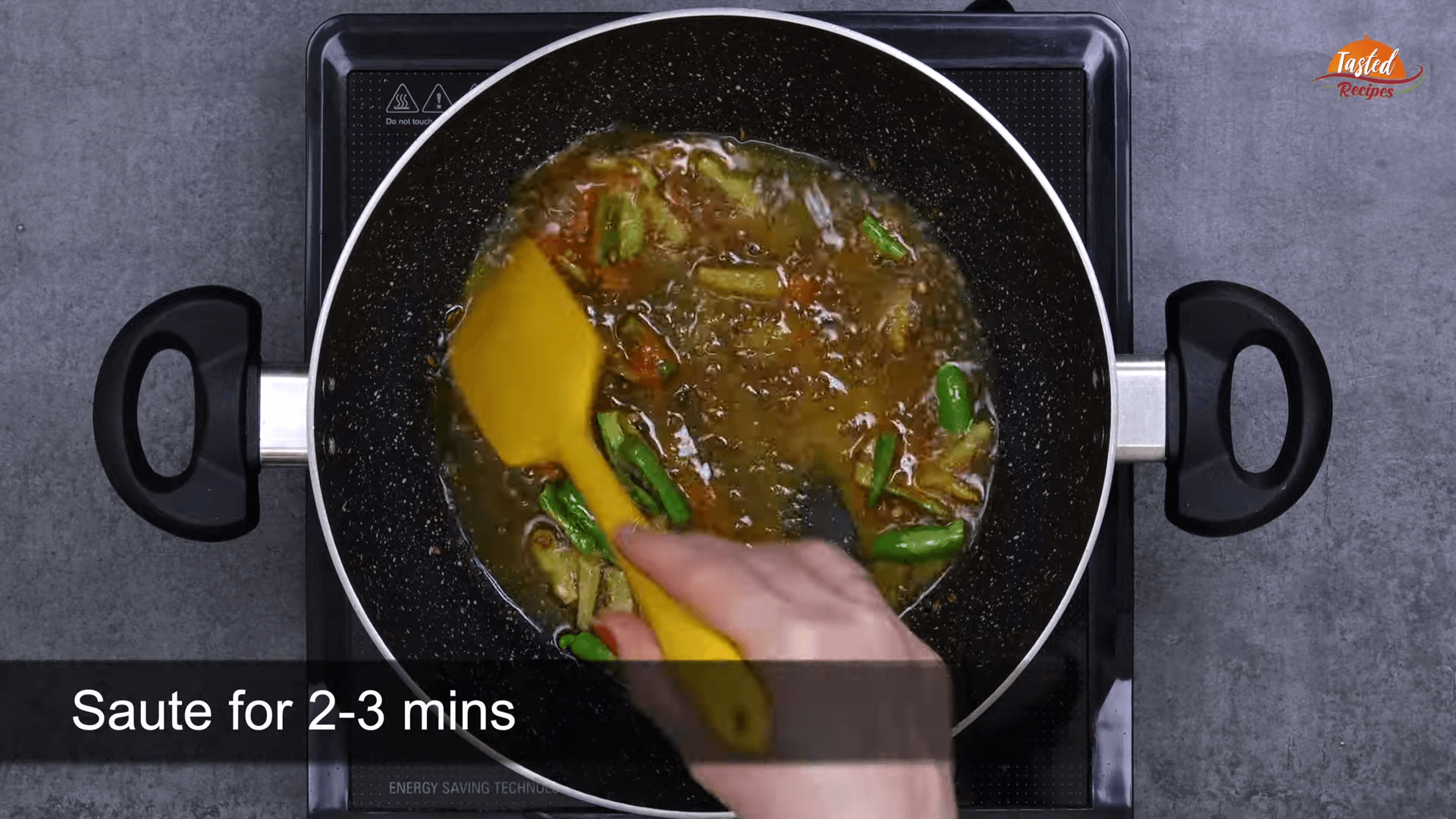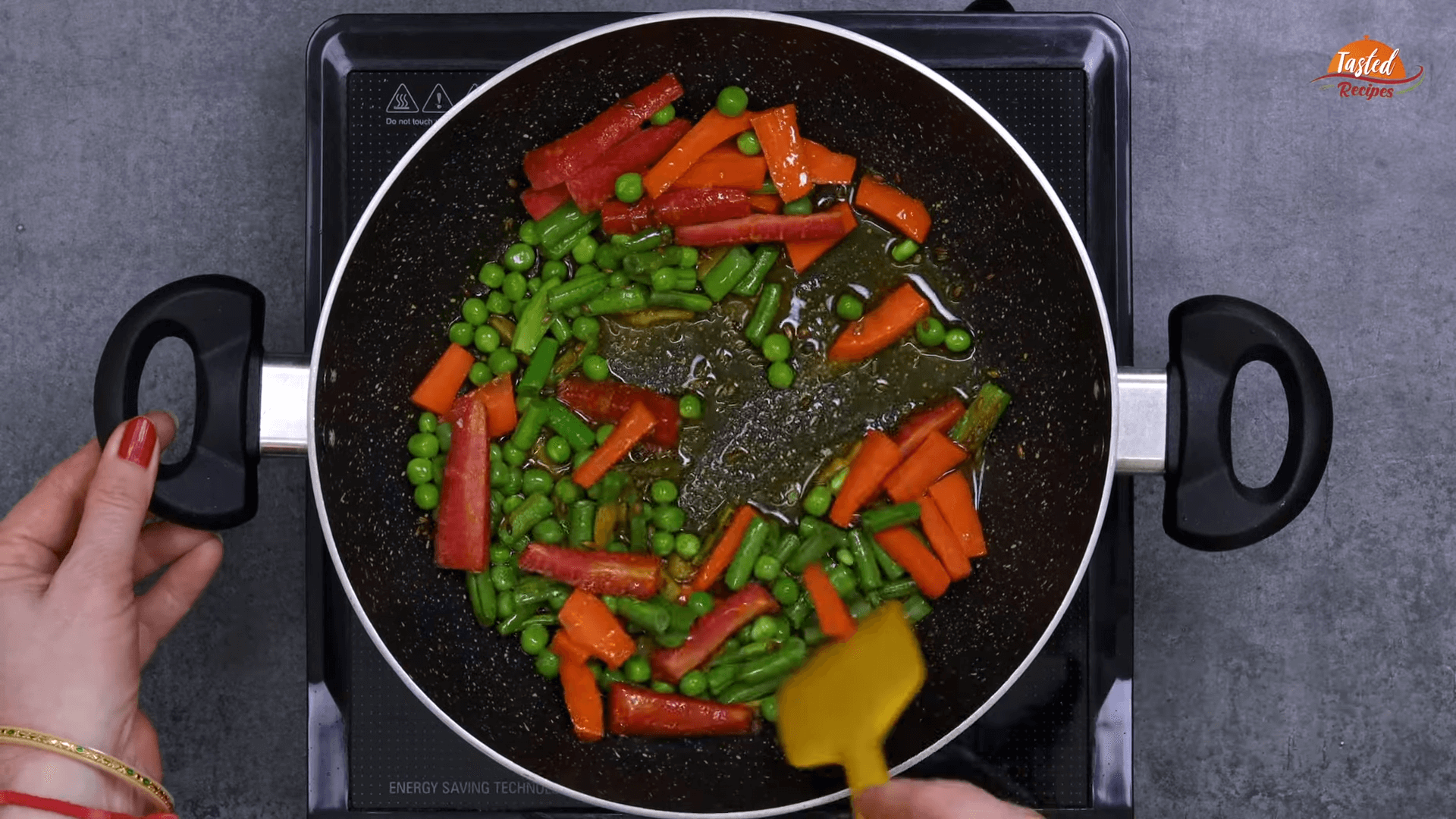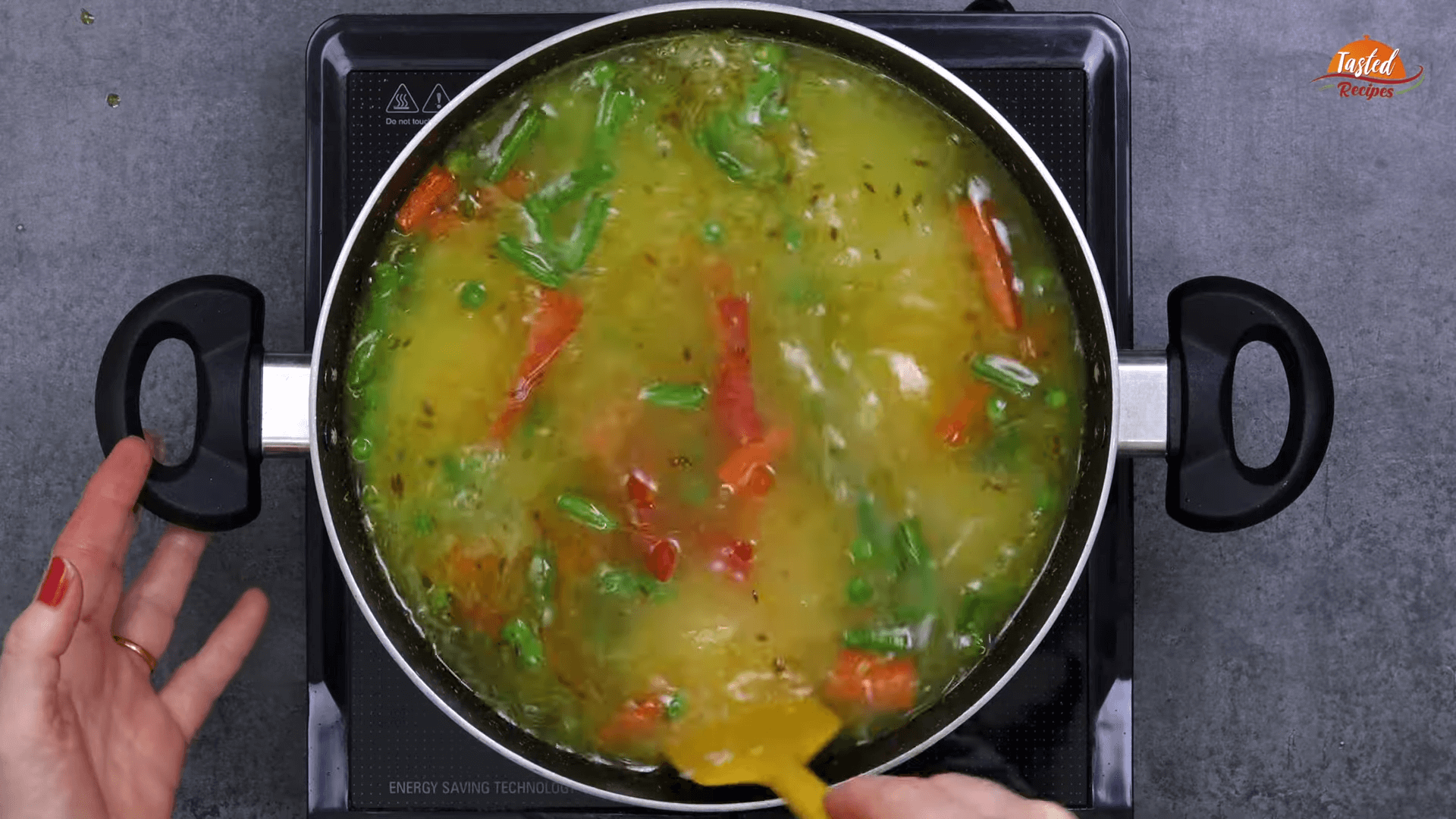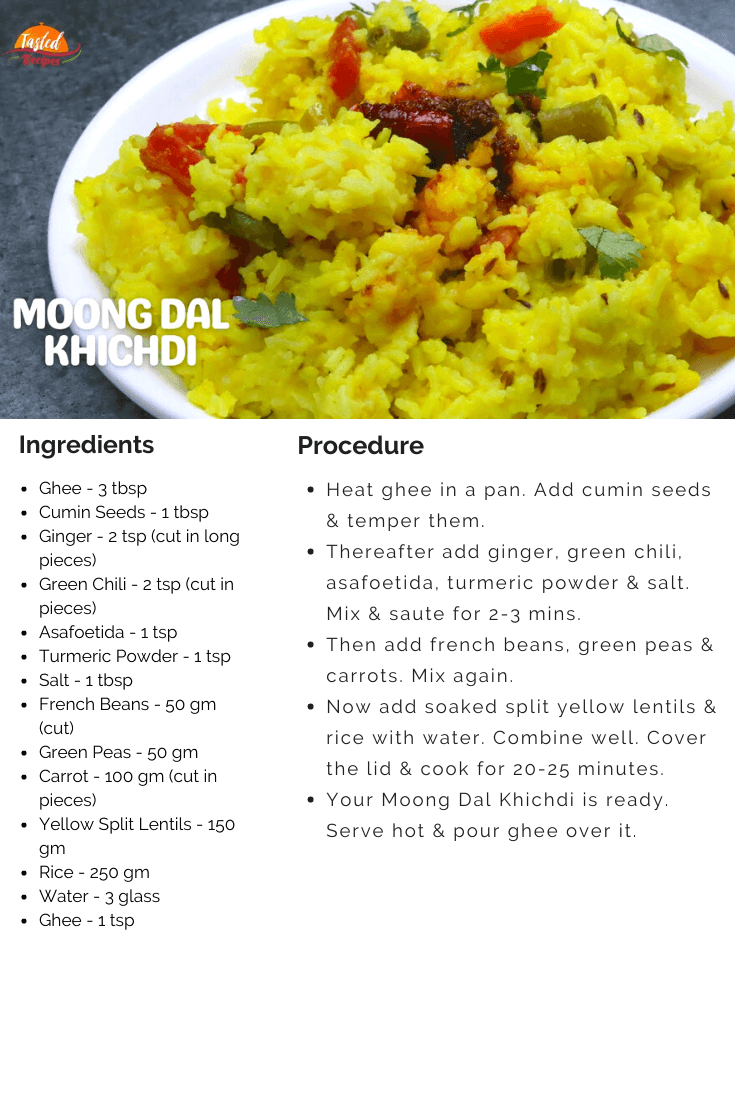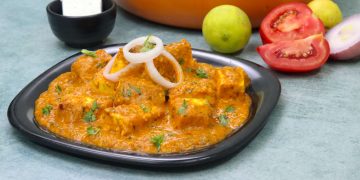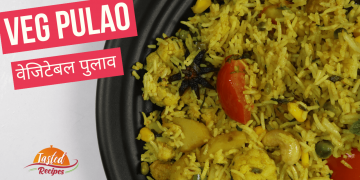Moong Dal Khichdi means lentils & rice with spice & masala. It’s a traditional Indian household meal significantly served in Gujarat state. People in the Indian subcontinent love eating it for either lunch or dinner. Okay, the story doesn’t end here. There’s something more.
Interesting Facts About Khichdi
While researching khichdi, I came across the English terms. I mean, what is khichdi in English called? Surprisingly, it is a hodgepodge, aka hotchpotch. Yes, you read it right. The word meaning of hotchpotch is “a confused mixture”. It’s somewhat silly.😀😃😄
The popularity of khichdi is next level. How? We have a Bollywood movie with the same name.😛😝😜 Yes, khichdi is the name of a comedy movie starring ace Gujarati film stars. Don’t believe it? Google “khichdi movie”.
At the same time, we have a famous saying in the Gujarati language. The phrase includes both ghee & khichdi. It is ઘી ઢોળાયું તો ખીચડી માં.🤣🤓🤩
Okay, jokes apart, our hodgepodge is not at all confusing. Let’s talk about the type of khichdi we are making today.
What is Moong Dal Khichdi?
Steam-soaked rice & yellow lentils along with spices & masala. Not only this but there are a couple of veggies too in it. All these together gives you the famous पिली मूंग दाल की खिचड़ी. Here moong dal is subjective. My point is you can replace yellow lentils with green or black ones.
On the other hand, you can add vegetables of your choice—for instance, white potato, beans, peas, and sweet potato pair well with rice. Since we are discussing ingredients, let’s look at items we need to make our moong dal khichdi. Here we go.
The British included this humble yet flavourful meal in their cuisine but with the addition of smoked fish, mostly Haddock. This version was named Kedgeree. Likewise, some recipes sometimes include boiled eggs, prawns, chicken, etc.
Pre-preparations
- Soak rice & lentils before cooking. If possible, soak them in lukewarm water.
- Wash, clean, chop, cut or peel vegetables first.
- Collect all the ingredients and then began the cooking.
Making Moong Dal Khichdi
The khichdi we are making today is a start to finish the recipe. Once you begin, there’s no stopping by. In other words, there are no complex procedures. That’s the main reason behind the popularity of this recipe. Henceforth, let’s quickly go through the process.
Refer to the pre-preparation above.
Saute dry spices in ghee along with veggies. Make sure the vegetables are tender. Add rice & lentils with the correct amount of water. Cook everything for 20-25 minutes. The time here is the electric cooktop timing. If you are using a pressure cooker, then 3-4 whistles will be enough.
One point one should note is we don’t boil veggies separately. Instead, we cook them with rice & lentils.
That’s it. Pour a tablespoon of ghee over it & enjoy with mango murabba & masala chhaas. You can also have it with pickle, chutney, raita, papad, or simply yoghurt.
Pouring additional ghee on khichdi is one way to shower love on our guests in India. The same applies to our khichdi as well. For the rest of you, do it without hesitation.😁😆😅
Why is this Moong Dal Khichdi Healthy?
There are many reasons too why this khichdi recipe is healthy. We aren’t talking about hardcore dieting here. The upfront reason is minimal spice & masala in it.
The quantity is limited. Moreover, there isn’t any cheese, cream or high-fat items. On the contrary, the ghee that we are using is less. Now, if that’s troubling, you then replace it with olive oil.
This khichdi integrates green vegetables that are not only healthy but also flavourful. Thus, we have ample reasons to eat it & still monitor our daily calorie intake. So go ahead & try it.
Making Khichdi Without Pressure Cooker
Pressure cooking this dish is actually the fastest way to cook it and easy as well. But it so can happen that you may not have a pressure cooker on hand with you. In that case, worry not! We got you covered. You can use instant pot or you can also make it in a pan.
When making this in an instant pot or pan, you first need to saute the cumin seeds in oil/ghee. Then saute the onions first until they are somewhat soft and saute ginger, garlic, and chillies.
Then do the same with other vegetables, whatever you are using. While frying the vegetables it is better to add turmeric powder and asafoetida (if using). This will eliminate the raw smell these ingredients have. The recipe will remain the same for both pot and pan until this step. Once we come to adding the rice and lentils the process will differ.
In instant pot we need to add water, cover and seal with the lid. Pressure cook for around 9 minutes. But do not open the lid immediately, instead wait for 10 minutes before checking if it is done.
When using pan, add rice and lentils then stir them for a minute. Add the required amount of water to it. Cover the pot and cook on a medium-low to medium flame until the lentils are softened and mushy. You can add more water if the rice is not completely cooked in the end of the process.
Both the method will require more water then with pressure cooker. While in instant pot you will require around 3.5 cups of water for 2 cups of rice & lentils. In pan you will need to add 4-4.5 cups of water for the same amount of rice and lentils. Sometimes more if the dish is not ready.
Storage:
Khichdi is the best when served and eaten fresh, immediately after you make this. It tends to get dry and lumpy once cold.
However, if there is still a leftover of this dish then refrigerate it in a container. But keep in mind that this dish will only be edible for a day and not more than that.
When you need to consume the leftovers, you may need to add some water while reheating. There is a possibility of it becoming lumpy.
Tips:
- Traditionally, we make khichdi using ghee instead of oil. It enhances the flavour. Moreover, the aroma of tempering in ghee is extraordinary. Hence, use ghee & not cooking oil if available.
- You can add sweet potato or regular white potatoes too in this. On the contrary, even a brinjal is a good option. In short, there are several veggies you can put in khichdi to make it enticing. The choice is all yours.
- The variety of rice here depends on your preference. Even the regular dal-chaval rice is permissible. There’s no restriction on a specific brand or type. The concern here is that you must like it.
- You can substitute & experiment with other lentils too instead of split yellow lentils.
- The water is to be handled with care as it makes or breaks the recipe. More water will give you a porridge-like consistency and the rice will be mushy. Less water will give you more of a pulao/pilaf consistency and the rice will not be soft enough. Hence, you need to be careful about the water.
Frequently Asked Questions
Why Do Indians Eat Khichdi When Ill?
Khichdi is a healthy and light recipe, full of proteins. It is also easy to digest and does not irritate your stomach. Hence when Indians are down with fever or especially stomach aches, they eat khichdi. It is so healthy that even doctors recommend this.
Can small babay or child eat Khichdi?
Yes definitely. As I mentioned above, it is a healthy and light recipe with ample amount of proteins and nutrients. Moreover, it has a porridge like consistency and the rice is soft and mushy. Hence, babies, children, and even old people have no problem consuming it. Just remember to cut down the amount of dal and spices when making this for babies.
Is Khichdi a detox recipe?
According to Ayurveda, the three dosas i.e. kapha, pitta & vata is balanced by moong dal which we are using in this recipe. Hence, this can be included in a detox recipe.
Hence, that was it with the hotchpotch recipe today.
